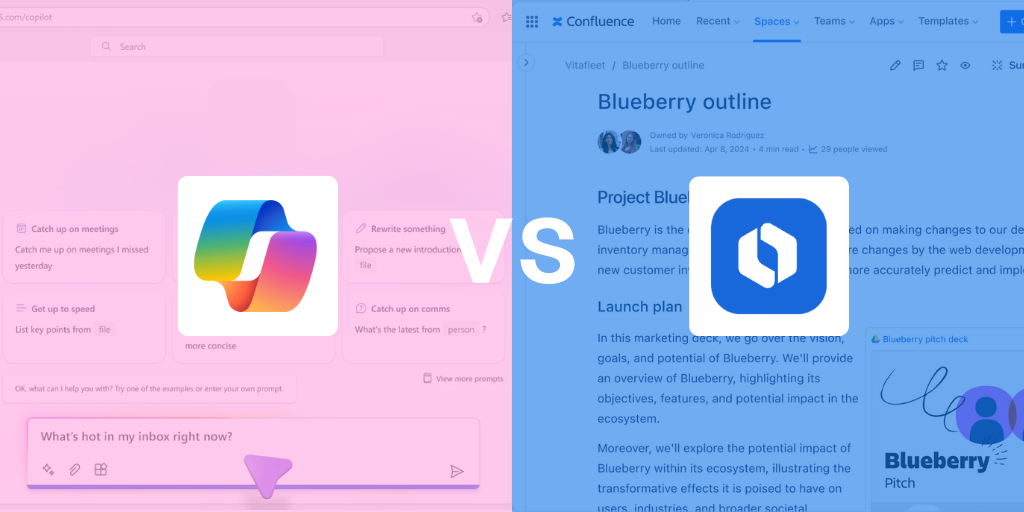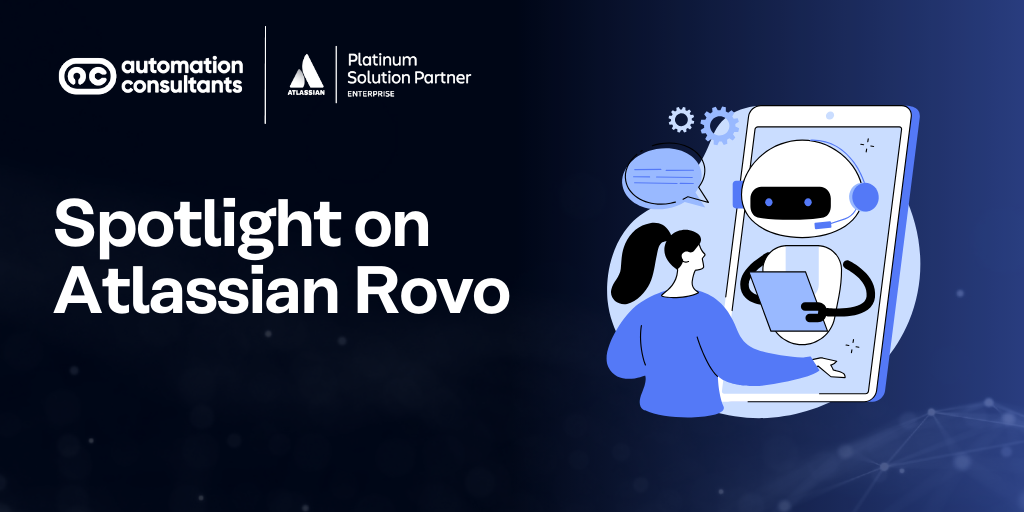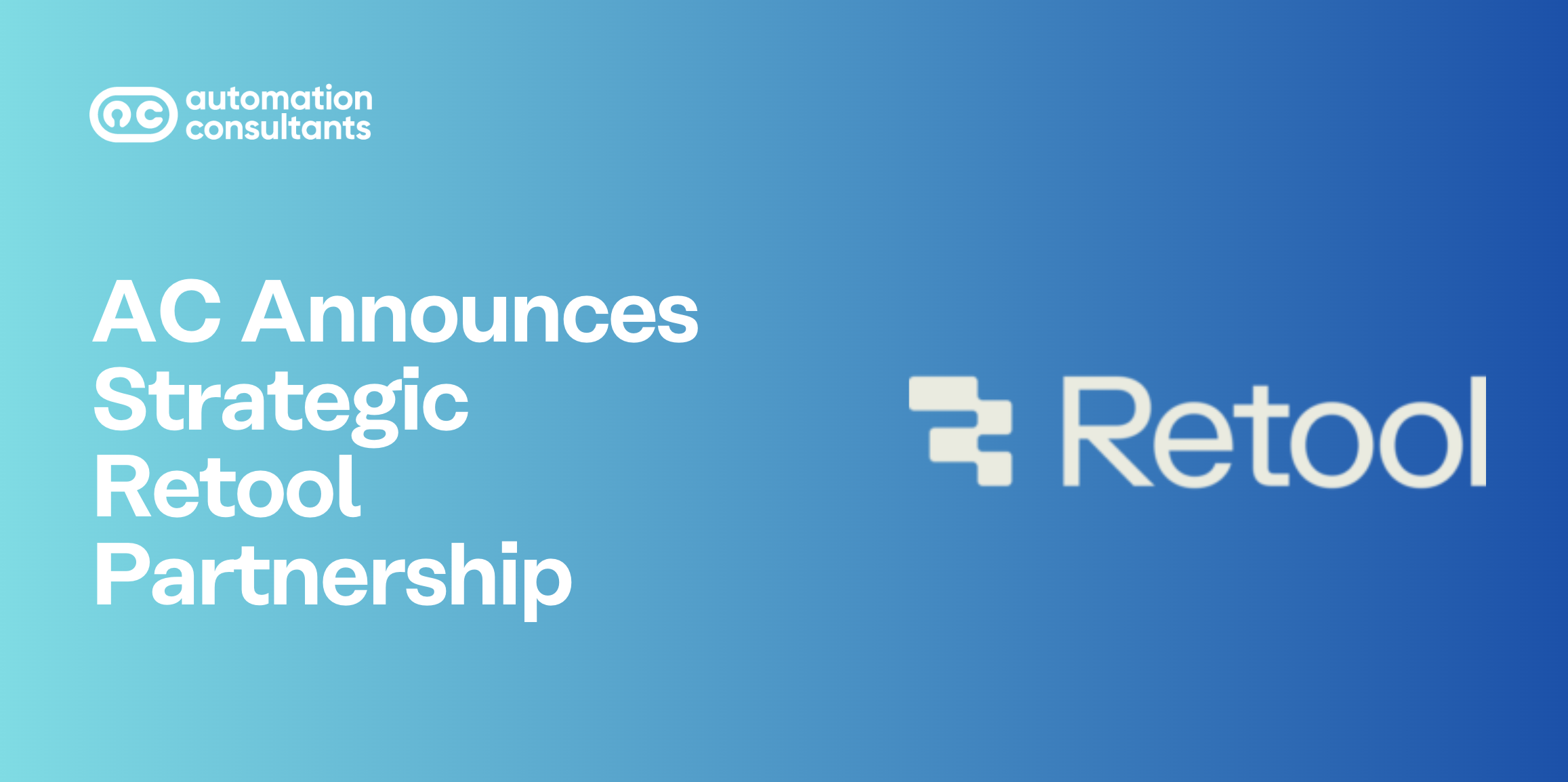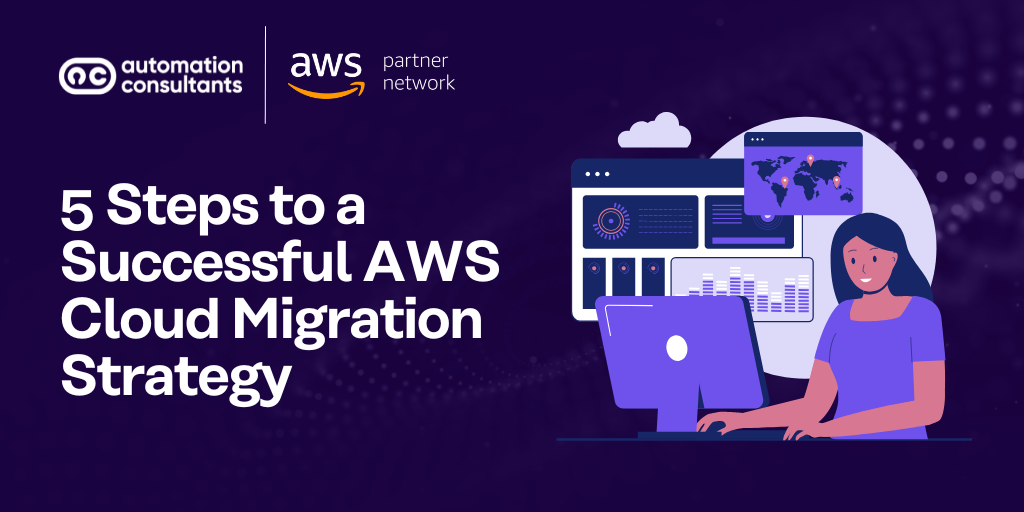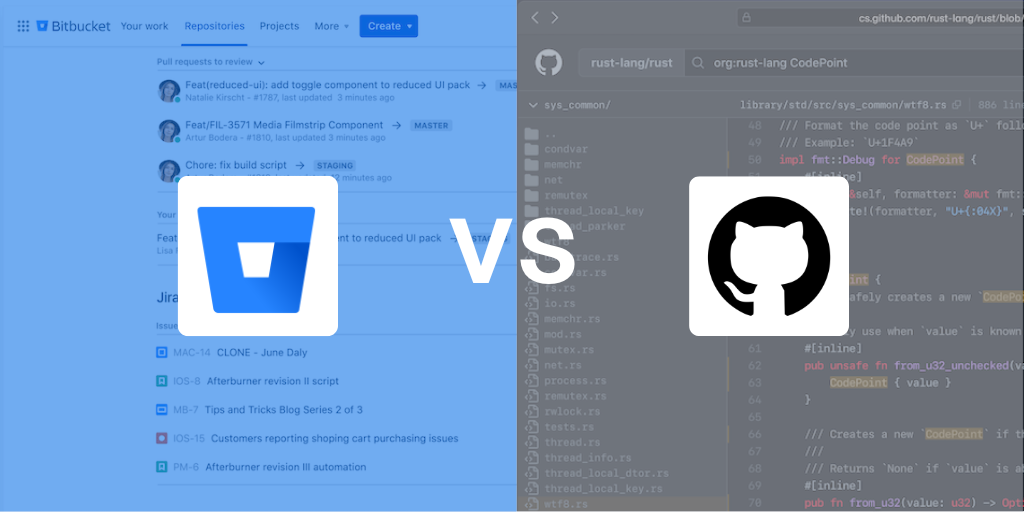If you’re anything like us, your sights are firmly fixed on the evolution of AI tools and their impact on the way we work.
Of particular interest to us (and, we imagine, you, as you’re reading this!) is the continued growth of Atlassian’s Artificial Intelligence capabilities, and how these compare to similar products.
The latest Atlassian Intelligence innovation is Rovo, which was launched at Team ‘24 Europe last year. Designed to unlock and connect enterprise knowledge, we understand that Rovo is already becoming an essential AI companion across the System of Work.
Today, we’re comparing Rovo with Microsoft’s AI tool, Copilot. Join us as we explore:
What is Atlassian Rovo?
We’ve touched on this briefly already, but let’s recap (if you want to skip to the Rovo vs Copilot comparison, please do so).
Launched in October 2024, Rovo is an AI-powered tool within the Atlassian System of Work. Available on Atlassian Cloud, it has been designed to fulfil three core purposes:
Search across all Atlassian tools and third-party applications used across an organisation, from Google Drive and GitHub, to Slack and Figma, to deliver insights within one central place. This reduces information silos, lessens context switching and enhances cross-enterprise knowledge sharing.
Support users’ understanding of the data within their organisation. This is delivered through the following features:
- Rovo chat: When enabled in any of your Atlassian Cloud sites, Chat acts as a ‘virtual teammate’, answering queries with context-backed results driven by your organisation’s unique teamwork graph (you can read more about the Atlassian teamwork graph here).
- Rovo chat browser extension: Benefit from Rovo’s chat capabilities even outside of your Atlassian tools
- Rovo definitions: When you come across an acronym, for example, within a Confluence document, Rovo will provide a definition for you. This can be particularly useful to aid onboarding for new teammates, or for colleagues working across new projects or teams who need to be brought up to speed quickly.
Automate and action specific tasks, with Rovo Agents. From Issue Organiser to Global Translator, there are 20 out-of-the-box Rovo agents designed to fulfil defined use cases. You can also create your own custom ones (more on that later).
Ultimately Atlassian Rovo aims to enhance enterprise knowledge sharing, overcome teams and data in silos, and increase the efficiency and accuracy of repetitive tasks.
Are you struggling with data silos, disconnected teams or barriers to productivity? Atlassian Rovo could be the key to unlock greater collaboration and enterprise efficiency for you. From best practice to creating custom Rovo agents, we can support you through implementation, integrations and more.
What is Microsoft Copilot?
Copilot is Microsoft’s AI tool, and is billed as a ‘secure AI Assistant’ across Microsoft 365 apps. It also operates as a web-based tool, which is free for anyone to use (as opposed to the 365 version, which requires a paid plan). Let’s look at both of these ‘versions’ of Copilot.
The website (copilot.microsoft.com) is a familiar sight for those of us who use tools like Chat GPT. This is unsurprising, as Microsoft drew on Open AI’s technology to build Copilot. (PCMag UK actually shared a useful comparison between Copilot and Chat GPT here.) In this free browser version, you can ask the tool anything and everything you’d expect – from answering questions to composing poems about cats (this was, genuinely, this author’s first request).
There’s no comparison between Atlassian’s Rovo and the Copilot browser tool, as there’s not a direct Rovo equivalent. It’s worth mentioning again that a Rovo Chat browser extension is available – but this only answers queries relating to your organisation-specific data (as opposed to Copilot’s general knowledge and feline sonnets).
The more interesting story is the comparison between Copilot when used within the Microsoft 365 suite of apps and Rovo.
Copilot and Rovo: What are the similarities?
From Microsoft Word to PowerPoint, you can ask Copilot to complete any number of actions, from summarising meeting minutes to drafting a press release. There’s a wide range of use cases which may be valuable for teams using Microsoft applications in their daily work, some of which can be achieved through pre-built Copilot agents.
Out-of-the-box Rovo agents perform similar duties across the Atlassian product suite, whether that’s crafting copy in Confluence, or summarising the contents of support tickets in Jira Service Management.
Both tools also appear to deliver information based on the context of their respective wider ecosystems – so Rovo draws on data from your organisation’s unique Atlassian teamwork graph, and we understand that Copilot uses your Microsoft 365 usage and patterns to deliver context too.
Finally, they’re priced fairly similarly – although be aware that there will be differences around organisation size, existing licences and whether you bill monthly or annually.
Atlassian Rovo vs Microsoft 365 Copilot: What’s the difference between them?
This is where it gets a little more interesting.
Ostensibly, the most notable difference between Rovo and Copilot is that the former is used across the Atlassian ecosystem, whilst the latter is designed for Microsoft applications.
The differences go a little deeper though, when we explore the true value of each tool.
It looks as though Copilot’s primary aim is to operate very much as a AI virtual assistant, making tasks quicker and easier for its users.
Atlassian’s existing AI capabilities (Atlassian Intelligence) already provide a range of similar features, such as summarising meeting minutes or drafting content, and Rovo then builds on these further, predominantly through its range of agents (which we mentioned earlier).
Both tools also provide the ability to customise agents, to fulfil more bespoke use cases. Let’s take a moment here to look more closely at Rovo’s custom agent offering, as, from our perspective, it gives Rovo the edge over similar AI tools.
Rovo custom agents
It’s simple for end-users to build their own custom Rovo agents to support their personal workflows.
Users can configure them in natural language, without any need for coding or UI proficiency. Now, both Copilot and Rovo ask users to provide clear instructions to create their agents, but Rovo takes this a step further with a ‘Wizard’, which guides you through writing those instructions in the first place.
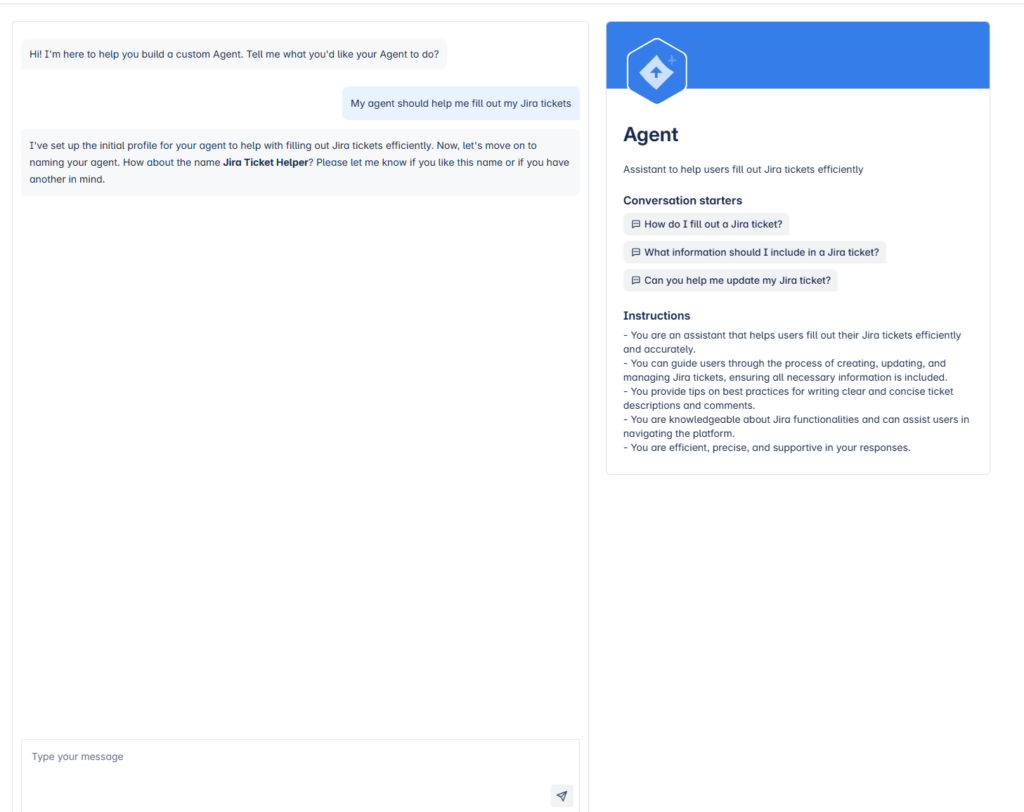
In line with Rovo’s theme of ‘connecting the dots’ across enterprises, it’s also incredibly easy for end-users to copy and share their own custom agents.
This ease of use and accessibility is indicative of Atlassian’s wider ethos of connecting and empowering all teams and users across the System of Work – not just Admins or those in technical teams.
Connecting tools, people and knowledge
For all its helpful capabilities and range of agents, for us Copilot never truly transcends its role as a ‘useful’ virtual assistant. It helps makes tasks easier and more efficient within the Microsoft 365 suite of tools, but seemingly does not go beyond this remit.
Rovo, meanwhile, has a deeper purpose due to the role it plays in Atlassian’s overarching aim to unite disparate tools, processes and teams. From its enterprise search feature, which clearly demonstrates Atlassian’s goal of centralising knowledge from multiple different sources, to its embedded experiences and out-of-the-box integrations within its own ecosystem (like the ability to create issues or add comments in Jira and Confluence), Rovo indicates a shift in the way that teams use AI to empower and connect their work.
Ultimately, we expect Rovo to be used as a tool to bridge the gaps between all of the other applications in use across an enterprise, by pulling in valuable data, actioning tasks and fulfilling use cases.
💡 Spotlight on Cloud
Rovo, as we mentioned before, is another Cloud-only innovation. The tool joins other new Cloud products, like Atlassian Focus, and tool enhancements, to further demonstrate Atlassian’s dedication to a Cloud-first future.
Strengthening this is also the new Strategic Collaboration Agreement (SCA) between Atlassian and AWS, which was announced at the tail-end of 2024. This agreement includes the establishment of a Cloud Center of Excellence (CCoE) to streamline complex migrations.
It’s an exciting time to be joining the Atlassian Cloud ecosystem – and we truly mean that. Whether you’re coming completely new to the Atlassian product suite, or you’re considering a move from Data Center to Cloud, to benefit from the raft of Atlassian’s Cloud-only (and, frankly, game-changing) capabilities, it’s likely you’ll experience continued innovation around Atlassian Intelligence, witness the introduction of additional Cloud tools or features and, of course, benefit from the enhanced security and peace of mind that AWS can deliver.
Think Rovo is the right fit for your team?
Talk to us today! From evaluating your tooling options to guiding you through an Atlassian Cloud migration, we’ll lead you to long-term success with the Atlassian product suite. As both a Premium Solutions Partner and Cloud Specialized Partner, we’re ideally placed to support your organisation and maximise your value from Atlassian tools.

